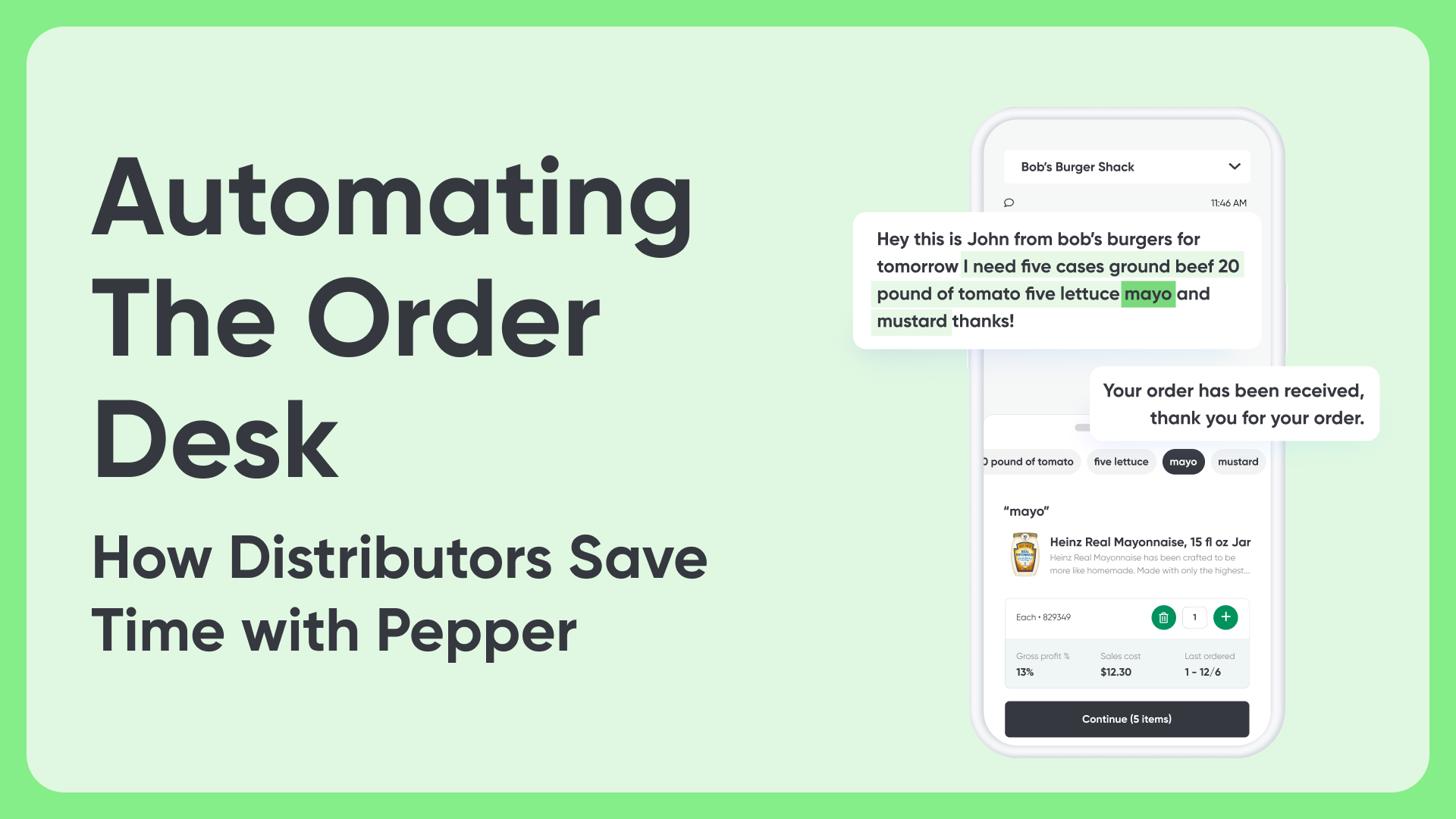At its core, AI has been instrumental in digesting vast datasets, identifying patterns, and leveraging algorithms to analyze information with a speed and accuracy far beyond what human effort alone could achieve over years. The journey from the curiosity surrounding IBM's Watson to today's conversation reflects a significant evolution that introduced us all to the idea of machine learning, then gave us a way to interact with it. Even a decade ago, forward-thinking distributors were leveraging machine learning technologies, such as IBM's Watson, to sift through customer data, tailor marketing campaigns, and create personalized shopping experiences.
It goes beyond that, now, because Natural Language Processing (NLP) expands on machine learning algorithms to simplify the way we ask questions about this data, while expanding the breadth of knowledge these models can manage around the world. AI is simply better at guessing a human’s intent and surfacing better answers.
We know that food service distributors occupy a unique nexus within the supply chain, amassing extensive data from myriad transactions. This information spans product details, handling instructions, storage conditions, and preparation guidelines—encompassing everything from weights and dimensions to brand names, nutritional facts, allergens, and pricing data.
Furthermore, consider the labor-intensive process inherent in managing customer data within the food service sector: organizing account details, overseeing order-to-pay procedures, ensuring seamless communication with warehouses, and the meticulous execution of order fulfillment. These human-led processes invariably encounter errors, prompting a subsequent investment in human capital to rectify these mishaps.
The real power lies in synthesizing these disparate data points into actionable intelligence and then applying features that take the mundane tasks or massive computational challenges out of processes that rely on this data.
This next version of AI that we’re noticing is really the combination of machine learning, large language models (LLMs), and Natural Language Processing (NLP), which have now made it feasible to interpret and harness these vast data reservoirs. Further, the accessibility of AI through platforms like OpenAI's ChatGPT or Google's Gemini, marks a new frontier in food service distribution because the barrier of bringing the broader benefits of AI into any business has been significantly lowered.
Today, we stand on the cusp of a transformative period where AI enables the industry to leverage decades' worth of accumulated data in unprecedented ways. The commoditization of AI technology not only empowers the food service sector to innovate but also accentuates human creativity by freeing us from computational tasks and allowing us to dream bigger, translating ambitious ideas into reality through technology once thought unattainable.
Let’s explore together how AI is not just reshaping food service distribution but also setting the stage for a future where technology and human ingenuity converge to redefine what's possible.
In the ever-evolving landscape of food service distribution, artificial intelligence (AI) is silently orchestrating a revolution, transforming traditional practices into seamless, efficient, and highly personalized experiences.
1. Conversational Ordering: Simplifying Communication
Imagine placing orders with the ease of sending a casual text or email, but with the added complexity of industry-specific requirements. Advanced AI algorithms have made this possible, interpreting natural language to understand and process orders accurately. This innovation not only streamlines the ordering process but also virtually eliminates errors, ensuring that every interaction adds value and enhances customer satisfaction. Behind the scenes, a leading platform leverages this technology to redefine customer service standards in distribution.
2. Intelligent Product Recommendations: Personalization at Its Best
Through the analysis of intricate data patterns, including purchasing behaviors and market trends, AI now offers highly personalized product recommendations. This capability ensures that clients receive suggestions that are not only timely but also tailored to their specific needs, often anticipating requirements before they arise. This approach to predictive analytics is subtly transforming how businesses engage with their clients, promoting a proactive rather than reactive service model.
3. Virtual Assistance for Operational Efficiency
The integration of AI-powered virtual assistants into daily operations is simplifying complex processes, from order tracking to inventory management. These assistants are available round the clock, providing immediate responses and support, thereby allowing human resources to focus on strategic tasks that require a personal touch. This level of automation and support hints at the sophisticated capabilities of a certain platform, designed to empower both distributors and their clients through technology.
4. Price Guidance: The Personalized Approach
AI has the capability to analyze vast amounts of data, including customer purchasing history, market trends, and competitor pricing, to recommend personalized prices for new items by customers. This approach is akin to the dynamic pricing model used by retail giants like Amazon, where prices vary based on user behavior, demand, and other factors. By adopting a similar strategy, DSRs can offer competitive, customized pricing that maximizes profitability while catering to the unique needs and preferences of each customer, ensuring a more personalized and efficient sales process.
5. Actionable Insights: Data-Driven Decisions
With AI, vast amounts of data are no longer daunting but rather a goldmine of actionable insights. These insights enable businesses to identify opportunities, anticipate market trends, and make informed decisions swiftly. The ability to leverage predictive analytics for strategic planning underscores the advanced analytical capabilities of a platform that is quietly leading the industry towards a more data-informed future.
6. Simplified Tech Stack for DSRs
Finally, AI is addressing the challenge of technology overload for Distributor Sales Representatives (DSRs) by consolidating essential tools into a more manageable, integrated solution. This not only enhances usability but also improves efficiency, allowing DSRs to concentrate on cultivating client relationships and driving sales. The existence of such a streamlined platform suggests a thoughtful approach to technology, designed with the user's needs in mind, emphasizing ease of use without compromising on functionality.
As the food service distribution industry continues to navigate the complexities of modern business, AI stands out as a beacon of innovation, driving efficiency, personalization, and strategic insight. While the revolution is subtle, the implications are profound, hinting at the capabilities of a platform that embodies these advancements, offering a comprehensive solution designed to propel the industry forward.
At Pepper, we’re here to lead the way.
.webp)
Schedule a Pepper Demo today






























.jpg)
